-
 Projecting win-loss record for all 30 teams now that Bryce has signed
Projecting win-loss record for all 30 teams now that Bryce has signed
Projecting win-loss record for all 30 teams now that Bryce has signed
ESPN PLUS ($ MATERIAL)
With the Phillies' signing of Bryce Harper last week, we can start to turn our full focus on spring training, as the time-honored baseball calendar dictates. Most of what Scott Boras would call the "steak" of the free-agent market has been served. And while there are some quality players still looking for landing spots -- a list that includes lefty starters Dallas Keuchel and Gio Gonzalez, longtime relief ace Craig Kimbrel and veteran outfielders Carlos Gonzalez and Adam Jones -- we now have a pretty good idea of how each team's roster will look when the 2019 season begins later this month.
It has been awhile since we have taken stock of the majors through the prism of my ever-evolving projection system (MLBPET, for those who care), so here are a few technical notes before we swing around the big league landscape.
1. The biggest change since last season is that, as part of my procedure for constructing the recent series on positional tiers, I have separated defensive projections from offensive projections. That is, for position players, I used to simply project a version of WAR based on player track records and career aging curves. In analyzing my hits and misses from the past couple of seasons, it became clear that the defensive component of WAR was problematic from a forecasting standpoint. By separating hitting and fielding, I am hopeful that not only will the accuracy of the team forecasts improve but I'll be better able to judge the strengths and weaknesses of each team.
2. The projected records you will see are baseline forecasts. They have not been cycled through a schedule simulator, a process that adjusts the records for strength of opponent and generates the probabilities for each team qualifying for the postseason. We'll save that for the Opening Day version of Stock Watch.
3. The runs scored and runs allowed listed are context-neutral. They have been adjusted for league and ballpark, so you can look at comparisons between teams as an apples-to-apples relationship. However, bear this in mind. When you look at, for example, the Rockies' projection, remember that their real-life numbers will skew higher because of the high run-scoring environment of Coors Field.
4. The unit ranks are based on each player's subcomponent of my version of WAR, which isolates hitting from fielding, and starting pitching from relief pitching. Each player's score in each of these areas is weighted for anticipated playing time. The team score is a simple sum of these measurements.
5. The change from 2018 measures the team's current win projection as compared to its final power ranking at the end of last season. The measurement reflects personnel changes, expected statistical regression and the aging patterns of the players on the roster. Teams with extreme 2018 records -- such as 100-plus wins or 100-plus losses -- will tend to have a heavy degree of statistical regression.
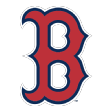 1. Boston Red SoxProjected record: 98-64 (Change from final 2018: -11)
1. Boston Red SoxProjected record: 98-64 (Change from final 2018: -11)
Neutral RS: 835 | Neutral RA: 662
Unit ranks: Hitters (1) | Fielders (4) | Starters (3) | Relievers (26)
Let's face it, Boston's Kimbrel-less bullpen sticks out like a sore thumb on a team that still projects as the best in the majors. Luckily for Red Sox fans, this "glaring" weakness is strictly an on-paper proposition. Boston clearly feels its internal options will hold up just fine, and even if they don't, all of the Red Sox's in-season moves can be focused on bolstering that area.
 2. New York YankeesProjected record: 94-68 (Change from final 2018: -5)
2. New York YankeesProjected record: 94-68 (Change from final 2018: -5)
Neutral RS: 811 | Neutral RA: 678
Unit ranks: Hitters (4) | Fielders (12) | Starters (5) | Relievers (3)
With the two best teams in the majors both residing in the American League East, we're looking at another epic avoid-the-wild-card-game race between Boston and New York. In some ways, the Yankees are a more complete team than the Red Sox, if only because of their powerhouse bullpen. The defensive projection is tepid, but bear in mind that there is really no way to project third baseman Miguel Andujar as anything but a major liability with the glove. If he improves enough to move toward league average, suddenly the Yanks are looking like a team without a real weakness. This supposes, of course, that Gary Sanchez has a bounce-back season and Luke Voit's breakout half-season proves to be for real.
 3. Houston Astros
3. Houston Astros
Projected record: 94-68 (Change from final 2018: -8)
Neutral RS: 832 | Neutral RA: 697
Unit ranks: Hitters (2) | Fielders (27) | Starters (2) | Relievers (2)
The Astros' projection is a testament to the depth of talent Jeff Luhnow and his staff have collected over the years. Houston's offseason saw the likes of Charlie Morton, Keuchel and Marwin Gonzalez move on, and this after the Astros knew they'd be playing the 2019 campaign without injured Lance McCullers Jr. The scary thing for the rest of the league is that if some of Houston's near-ready (or ready) prospects such as Kyle Tucker, Josh James and Forrest Whitley transition to regular roles, 94 wins could prove to be a light forecast. This is probably as good a place as any to mention that the defensive forecasts are based on the aggregate of individual players' metrics, but doesn't factor in a team component that would award clubs that excel with shifting. Houston is probably baseball's most innovative organization from that standpoint, so its defensive standing is almost certainly better than what's reflected here.
 4. Los Angeles Dodgers
4. Los Angeles Dodgers
Projected record: 93-69 (Change from final 2018: +3)
Neutral RS: 801 | Neutral RA: 682
Unit ranks: Hitters (7) | Fielders (7) | Starters (7) | Relievers (4)
The Dodgers are the only team that ranks in the top 10 in all four of our unit rankings. As usual, the Dodgers are deep, talented and balanced, and once again they project markedly better than any other team in their division. If you recall my recent piece on team tiers, L.A. lacks anyone who meets my definition of a Tier I player, even though the roster as a whole is plenty loaded. A successful wooing of Harper would have plugged that one hole and likely would have marked the Dodgers as the preseason favorite to win the World Series. Instead, what the Dodgers really need is a star turn from Cody Bellinger for a full season, and he's certainly capable of providing that. One thing that is different about this version of the Dodgers is that the depth chart has been pruned to the point that manager Dave Roberts will be doing less platooning than he did last season. It will be interesting to see if the Dodgers actually get a few players enough time to qualify for the batting title, whether there will be a residual benefit of improved situational hitting, a bugaboo for last season's squad.
 5. Chicago Cubs
5. Chicago Cubs
Projected record: 93-69 (Change from final 2018: -1)
Neutral RS: 824 | Neutral RA: 702
Unit ranks: Hitters (3) | Fielders (1) | Starters (13) | Relievers (17)
When considering hitting, fielding and baserunning, the Cubs and Red Sox run pretty close in terms of having the best set of position players in the majors. Because of Chicago's relative lack of activity this winter, and its wildly inconsistent offensive showing from last season, I think people have forgotten just how much talent the Cubs have from a position-by-position standpoint. And while the rotation might be a concern in terms of age and depth, the fact of the matter is that Chicago's defense could help paper over an uptick in balls in play from its pitching staff. My biggest concern about the roster is in the back of the bullpen, especially since Brandon Morrow continues to be a major health question mark. But if the Cubs' relief staff comes together, the hand-wringing over the team's winter could prove to be much ado about nothing.
 6. Cleveland Indians
6. Cleveland Indians
Projected record: 92-70 (Change from final 2018: +0)
Neutral RS: 728 | Neutral RA: 627
Unit ranks: Hitters (16) | Fielders (3) | Starters (1) | Relievers (9)
The Indians clearly have some holes and the outfield could prove to be a mess, at least at the plate. However, Leonys Martin, Bradley Zimmer (when he gets healthy) and Greg Allen can all go get it, and a strong defensive backbone appears to be in place to support baseball's best starting rotation. I would have liked the Indians to acquire some more bullpen help. On the other hand, my system still sees a group led by Brad Hand, Oliver Perez, Adam Cimber and Dan Otero as serviceable, albeit not at the level of the Cody Allen-Andrew Miller-Bryan Shaw bullpens of years past. Did Cleveland do enough to maximize the window for its talented core? Probably not. But then again, in the AL Central, it really didn't need to do much. If Cleveland is aggressive about filling holes during the season to set itself up for the postseason, the quiet approach to this winter will prove to be fine.
 7. Milwaukee Brewers
7. Milwaukee Brewers
Projected record: 88-74 (Change from final 2018: -5)
Neutral RS: 802 | Neutral RA: 726
Unit ranks: Hitters (6) | Fielders (5) | Starters (20) | Relievers (5)
As we ponder whether the Brewers can fool us once again with a rotation depth chart that fails to inspire, let's use this space to consider what this year's National League wild-card race might look like. The Dodgers are heavy favorites to win the West again, and the Cubs have emerged in my forecasts as a fairly strong favorite in the Central. (Subjectively, I would have thought it would have been the Cardinals.) Milwaukee projects as the top wild card with 88 wins. However, the Cardinals, Braves, Nationals, Mets and Phillies all are within four games of the Brew Crew, though one of those four NL East teams will be a division champ. What makes this potential playoff chase so compelling is not that so many teams look to be tightly bunched, and it's certainly not because it looks to be a mediocre league. It's compelling because all of these teams are damn good, and there are only so many slots to go around. In addition to the teams named above, it would not be at all surprising for a sleeper team such as the Rockies or Reds to squeeze into the race. I don't know about you, but I am looking forward to this summer.
 8. New York Mets
8. New York Mets
Projected record: 87-75 (Change from final 2018: +13)
Neutral RS: 747 | Neutral RA: 692
Unit ranks: Hitters (11) | Fielders (21) | Starters (4) | Relievers (19)
I have worries about the Mets, even though MLBPET sees them as the slightest of favorites to win the loaded NL East. Since this piece isn't structured by division, let me illustrate what might be in store for us in the East by just listing the top four by forecast games behind:
1. Mets 0
2. Braves 1
3. Nationals 2
4. Phillies 3
That's four teams within three games of each other! We're talking about echoes of the 1967 American League or the 1973 NL East here. Obviously, at most, only three of those four teams could make the postseason, and that's assuming they all can stave off two very good non-first-place clubs from the Central. As for my Mets worries, of course some of it stems from injury concerns to the starting pitchers. I think we're all a bit shellshocked by the New York rotation by now. I'm also concerned that the Mets' solid offensive projection (11th in neutral runs scored) is being supported by at least one aging player (Robinson Cano). Nevertheless, there is a lot of upside in the Mets' position group with Brandon Nimmo (who needs to install his Blue Apron app) and Michael Conforto. The weakest positions in the projections are at first base and shortstop, where New York has tremendous upside in Pete Alonso and Amed Rosario, respectively. If that duo can produce at league-average rates, or even better, the Mets could be in for a banner season.
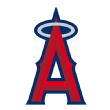 9. Los Angeles Angels
9. Los Angeles Angels
Projected record: 87-75 (Change from final 2018: +7)
Neutral RS: 802 | Neutral RA: 744
Unit ranks: Hitters (5) | Fielders (10) | Starters (23) | Relievers (13)
If there were two stalwart names listed in the Angels' projected rotation ahead of Andrew Heaney and Tyler Skaggs, I would be pretty excited about this team. I would especially be excited about it if there were a 4-win player penciled in at second base. In reality, the Angels again look like a club that's riding the Mike Trout train through the valley of mediocrity. That said, if L.A. can somehow get 140 starts from its core rotation, with Matt Harvey, Jaime Barria and Trevor Cahill joining Heaney and Skaggs, the Angels could give Trout his second shot at the postseason. By the way, if I were Artie Moreno, I'd just offer Trout $400 million on an extension and be done with it -- one way or the other.
 10. Atlanta Braves
10. Atlanta Braves
Projected record: 86-76 (Change from final 2018: -3)
Neutral RS: 764 | Neutral RA: 711
Unit ranks: Hitters (9) | Fielders (2) | Starters (12) | Relievers (22)
I thought the Braves missed the boat by not pursuing Harper or Manny Machado, but for the most part, it's not hard to understand why they wanted to play it mellow this winter. (Even if, as reported by the Atlanta Journal-Constitution, the Braves' corporate owners cleared $94 million in operating profit last season.) New addition Josh Donaldson offers the upside of an MVP-level bat if he's healthy, and prospect Austin Riley is coming up behind him. Ozzie Albies, Dansby Swanson and Ronald Acuna Jr. are all on the upward arc. Prospect Cristian Pache could join Acuna and Ender Inciarte late in the season in what would be a vicious defensive outfield, unless that possibility is overridden by service-time concerns. The starting rotation has a solid group of young veterans and a couple of waves of arms coming up through the system. However, given how Atlanta pretty much exhausted its bullpen in the successful pursuit of last season's NL East title, it would have been nice to see some additions to that group. And, yes, I think Kimbrel's best landing spot is with the Braves, though there is no indication that is going to happen. The Braves' window of contention is clearly open and will remain so for the foreseeable future. Still, given the progress of the teams around them in the East, if feels like Atlanta spent the winter running in place.
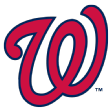 11. Washington Nationals
11. Washington Nationals
Projected record: 85-77 (Change from final 2018: +2)
Neutral RS: 742 | Neutral RA: 698
Unit ranks: Hitters (12) | Fielders (14) | Starters (6) | Relievers (18)
With a razor's edge separating the four contenders in the East, the presence of players like Keuchel and Kimbrel on the market means that not all of the prolonged hot stove drama has been exhausted. While the Nats' rotation is well positioned to forgo a pursuit of Keuchel, another lefty wouldn't hurt and the club is plenty familiar with Gonzalez. More than that, however, is the bullpen, which looks to be anchored once again by Sean Doolittle, joined by a reconstituted Trevor Rosenthal. Kimbrel fits here, obviously, but perhaps Washington general manager Mike Rizzo prefers to see how things shake out over the season's first half. The rumor this week was that the Nationals want to stay under the tax threshold, which pretty much rules out any kind of significant free-agent addition. That makes sense given the Nats' repeater status on the tax front, but, then again, every marginal win an East contender can gather now might pay huge dividends in a few months.
 12. St. Louis Cardinals
12. St. Louis Cardinals
Projected record: 85-77 (Change from final 2018: -4)
Neutral RS: 751 | Neutral RA: 712
Unit ranks: Hitters (10) | Fielders (8) | Starters (9) | Relievers (12)
The Cardinals don't have any obvious weakness, and I state that not just because of their solid across-the-board unit rankings. St. Louis also ranks in the top 10 at five of the eight non-pitching positions on the field, and no lower than 17th anywhere. Perhaps this is why when I view the Cardinals from a subjective standpoint, I kind of see them as the best team in the Central, though I can be talked into any of the Cubs, Brewers or Redbirds depending on my mood. It's hard to say why the Cardinals don't rate a little better than this, except that whereas they are good, or solid, in just about every area, they aren't really elite at anything. The Cubs and Brewers both have elite position groups, and Milwaukee has a top-five bullpen to boot. The Mets have their elite rotation, the Braves have their elite defense, the Phillies have the elite Harper, the Dodgers have elite-ish everything. So if you want to see the Cardinals hit their ceiling, be on the lookout for the breakout. Is this finally Paul Goldschmidt's MVP year? Can Alex Reyes provide a meaningful quantity of innings? Will Marcell Ozuna return to his high-30s home run totals? Will one of the young starters jump a tier or two? If none of those things transpires, it might be difficult for the Redbirds to stand out among fierce competition.
 13. Philadelphia Phillies
13. Philadelphia Phillies
Projected record: 84-78 (Change from final 2018: -1)
Neutral RS: 776 | Neutral RA: 748
Unit ranks: Hitters (8) | Fielders (29) | Starters (15) | Relievers (6)
The Phillies' offense should be outstanding, and if Maikel Franco and Odubel Herrera can both step up a tier, and Scott Kingery puts the super back into super-utility, it's entirely possible that Philadelphia could have the NL's best offense. The question right now is whether it's worth it for Philly to move on either Keuchel, Kimbrel or both. In the case of Keuchel, if you're optimistic, you might mark him as a 2-win upgrade over any of Nick Pivetta, Zach Eflin or Vince Velasquez. The optimistic part of it is Keuchel's ability to keep the ball in the park, always a plus for a pitcher toiling at Citizens Bank Park. It's just more of an uptick in value than you could expect from Kimbrel. Still, depending on the price, signing either player might not make fiscal sense. If that's the case, all eyes turn to watching Harper take his first swings as a home player in Philly, and to seeing whether Gabe Kapler can oversee a meaningful improvement from last year's wretched defense.
I wrote more about the Phillies' 2019 outlook with Bryce Harper last week.
 14. Colorado Rockies
14. Colorado Rockies
Projected record: 81-81 (Change from final 2018: -6)
Neutral RS: 731 | Neutral RA: 727
Unit ranks: Hitters (15) | Fielders (24) | Starters (10) | Relievers (14)
I'm a fan of Ryan McMahon and as much as I love the upside of Brendan Rodgers, I think McMahon should be a perfectly fine replacement at second base for DJ LeMahieu if that's the way things shake out in spring training. I'm a lot more concerned about the Rockies' outfield, where a splashy addition could have really improved the outlook. Moving Charlie Blackmon to right is smart, and it should bolster his status, if somewhat artificially, because his ugly center-field-at-Coors metrics will disappear. (He was really good already, but now more people might realize it.) But even if David Dahl can establish himself as a regular in left, there is a giant hole in center, where I have little confidence in Ian Desmond either with the glove or the bat. I'm not sure there is an obvious alternative in-house if Desmond's season goes south, but at the very least, Colorado should be on the lookout for a quality glove-first outfielder. I don't see that player on the remaining free-agent market, so we'll have to see how the trade front develops during the season. One player that would make a some sense is Arizona's Jarrod Dyson, if he should come available and is healthy. Another logical target could be San Diego's Travis Jankowski.
 15. Tampa Bay Rays
15. Tampa Bay Rays
Projected record: 81-81 (Change from final 2018: -7)
Neutral RS: 706 | Neutral RA: 707
Unit ranks: Hitters (20) | Fielders (6) | Starters (8) | Relievers (10)
On one hand, it's kind of surprising that the Rays didn't add a veteran thumper such as Edwin Encarnacion this offseason. On the other hand, did you see that ball Nathaniel Lowe hit the other day? Maybe the Rays have all the thump they need. Their lack of a true starting rotation and the number of youngsters with short track records drags down the projection. And yet the Rays still project as a .500 team. Consider that the floor for this group.
 16. Oakland Athletics
16. Oakland Athletics
Projected record: 80-82 (Change from final 2018: -16)
Neutral RS: 738 | Neutral RA: 748
Unit ranks: Hitters (14) | Fielders (9) | Starters: (30) | Relievers: (1)
Just one glance at these numbers will tell you what the overriding question is about Oakland's season: Can the A's somehow piece together a quality rotation once again? Will it have to be another smoke-and-mirrors act? If health concerns weren't such a big part of the problem, you could be looking at a starting group of Sean Manaea, Mike Fiers and Marco Estrada to provide the veteran stability, joined by the upside of A.J. Puk, Jesus Luzardo and Frankie Montas. But even that fantasy sequence aside, there are a lot of familiar names in camp, none of whom currently are going to elicit memories of a young Vida Blue: Daniel Mengden, Brett Anderson, Paul Blackburn, Parker Bridwell, Andrew Triggs, Jharel Cotton. I really have no idea what the A's rotation will look like, but given their success at making it work last season and the continued strength of their Blake Treinen-led bullpen to support the starters, it's hard to imagine that Oakland really will finish with baseball's worst rotation. And if it winds up in the middle of the pack, Oakland will be right back in wild-card contention.
 17. Cincinnati Reds
17. Cincinnati Reds
Projected record: 79-83 (Change from final 2018: +9)
Neutral RS: 738 | Neutral RA: 762
Unit ranks: Hitters (13) | Fielders (25) | Starters (19) | Relievers (27)
That the Reds are a little better on paper in terms of run prevention is all well and good, but if Cincinnati's stated intention to push into the playoff chase comes to pass, things are going to have to get a lot better. It's not hard to see Cincinnati's bullpen as being much improved. For one thing, by declaring that Raisel Iglesias will be better leveraged than as a strictly ninth-inning pitcher, the demonstrated willingness of manager David Bell to run a cutting-edge bullpen can't hurt. But I also like the mix of Jared Hughes and David Hernandez along with the power arm of Amir Garrett and jack-of-all-trades Michael Lorenzen. However, the Reds need to be a plus defensive squad, especially given the bloated scoring at Great American Ballpark, and it's not great that Lorenzen -- a relief pitcher -- might be the best defensive center fielder on the roster.
 18. Pittsburgh Pirates
18. Pittsburgh Pirates
Projected record: 78-84 (Change from final 2018: +0)
Neutral RS: 708 | Neutral RA: 732
Unit ranks: Hitters (19) | Fielders (18) | Starters (14) | Relievers (15)
How low can the Bucs' payroll go? What's the minimum salary times 25? If I were a Pirates fan, I'd be ticked, too. But I'd still go to games because the ballpark is awesome and why would I deprive myself of baseball because the owner won't spend any of my money?
 19. Minnesota Twins
19. Minnesota Twins
Projected record: 78-84 (Change from final 2018: +3)
Neutral RS: 710 | Neutral RA: 740
Unit ranks: Hitters (18) | Fielders (15) | Starters (17) | Relievers (11)
During my lurking on fan Facebook groups and other virtual public forums for baseball conversation, I've noticed that a lot of people have the Twins as their sleeper pick to win the AL Central. Not to spit in those fans' Cheerios, but MLBPET sees a 14-game gap between the Indians and the revamped Twins. Despite a busy offseason that saw Minnesota add C.J. Cron, Marwin Gonzalez, Jonathan Schoop and Nelson Cruz, the Twins still look like a pretty mediocre bunch to me. They would be a fit for both Kimbrel and Keuchel, but, really, what the Twins need is for some of their young bats to break out. That would likely come in the form of the 2017 version of Miguel Sano and an advanced version of Byron Buxton. Early spring reports of how good injury returnee Michael Pineda looks have been exciting, and if he can take that into the regular season, the Twins' rotation starts to look plenty strong.
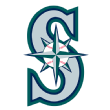 20. Seattle Mariners
20. Seattle Mariners
Projected record: 76-86 (Change from final 2018: -13)
Neutral RS: 711 | Neutral RA: 759
Unit ranks: Hitters (17) | Fielders (22) | Starters (22) | Relievers (25)
This is what a soft rebuild looks like. However, if GM Jerry DiPoto would like to solidify it, he's got some veterans like Encarnacion and Kyle Seager to dangle. Beyond that, it has been discouraging to read about Felix Hernandez's reportedly not-ready-for-spring appearance in Arizona. Could the former King Felix really have become apathetic at what he surely realizes is a career crossroads? While it would be foolish to project a return to dominance for Hernandez, a pitcher of his caliber ought to have a second act. Lately, there has been talk that he's going to throw his curveball more often, in response to what he has been told by Seattle's analysts. Maybe it's not too late for that second act, but something tells me it won't take long to find out.
 21. San Diego Padres
21. San Diego Padres
Projected record: 74-88 (Change from final 2018: +9)
Neutral RS: 698 | Neutral RA: 764
Unit ranks: Hitters (21) | Fielders (20) | Starters (24) | Relievers (16)
It's within the realm of possibility that the Padres could surge as high as second place this season and even dance on the fringes of wild-card contention. Their rotation outlook makes this unlikely, but even there you've got Chris Paddack knocking at the door -- and he could easily emerge as a Rookie of the Year candidate. The offense will be better with Machado, and the continued improvement of Manny Margot, Franmil Reyes and Luis Urias. That group could be bolstered by comeback seasons for Eric Hosmer, who has always been up and down on a seasonal basis, and Wil Myers. And if shortstop Fernando Tatis Jr. becomes this season's version of Juan Soto, the Padres are going to put up some runs. In any event, it would be surprising if the momentum generated by the successful pursuit of Machado does not carry through the season, postseason contention or not.
 22. Arizona Diamondbacks
22. Arizona Diamondbacks
Projected record: 73-89 (Change from final 2018: -12)
Neutral RS: 654 | Neutral RA: 727
Unit ranks: Hitters (27) | Fielders (19) | Starters (11) | Relievers (24)
I'm just not seeing where the runs to replace the voids opened by the losses of Goldschmidt and A.J. Pollock are going to come from. And while the rotation should be decent, without Patrick Corbin it's not going to carry this roster into contention. This is another soft-looking rebuild.
 23. Texas Rangers
23. Texas Rangers
Projected record: 73-89 (Change from final 2018: +3)
Neutral RS: 689 | Neutral RA: 766
Unit ranks: Hitters (22) | Fielders (16) | Starters (29) | Relievers (23)
There are things to root for in Texas, as the Rangers enter their final season before moving across the parking lot into a new venue in 2020. You can hope that Joey Gallo can up his contact game. That Rougned Odor can continue the gains he made over the second part of last season. That Nomar Mazara starts to approach his considerable ceiling. But this is a pretty bleak-looking season for the Rangers. Veterans added during the winter -- Asdrubal Cabrera, Logan Forsythe, Jeff Mathis, Drew Smyly, Edinson Volquez, Shelby Miller -- would serve the Rangers best by having good first halves so they can be flipped at the trade deadline. All are (or were) good players when healthy, but none moves the needle for a club that doesn't yet have a clear foundation. Beyond all this, if you do find yourself watching a Rangers game, keep an eye out for short reliever Jose Leclerc. The guy has some of the sickest stuff in baseball.
 24. San Francisco Giants
24. San Francisco Giants
Projected record: 73-89 (Change from final 2018: -5)
Neutral RS: 661 | Neutral RA: 740
Unit ranks: Hitters (25) | Fielders (11) | Starters (21) | Relievers (20)
As a group, my system has the Giants' infield ranked 22nd in baseball. That group -- Brandon Belt, Joe Panik, Brandon Crawford and Evan Longoria -- is entirely comprised of veterans with a good deal of stature in the game. The poor forecast is a reflection of how bad the past two seasons have been for San Francisco, and how quickly time passes in baseball. The system doesn't believe that time has passed by catcher Buster Posey. In fact, it sees him as the best backstop in the game, if his health is good, which is no sure thing at this stage. Still, you could see this thing working out into one last charge at a wild card for this group ... if the outfield were not so outright awful. Surely Bruce Bochy will be able to identify some above-replacement options, but there just might not be enough to get the group above nothingness. The best player in this group, Steven Duggar, is forecast at less than 1 WAR.
 25. Chicago White Sox
25. Chicago White Sox
Projected record: 72-90 (Change from final 2018: +6)
Neutral RS: 682 | Neutral RA: 769
Unit ranks: Hitters (23) | Fielders (26) | Starters (25) | Relievers (8)
Well, reality has set in for the White Sox. Neither Machado nor Harper is moving to the South Side of Chicago. There might not be another comparable free agent in terms of quality and age for quite some time. Trout? It's pretty to think so, but it feels like it's going to be the Angels or Phillies on that front, eventually. So now the White Sox enter the season hoping to re-establish enthusiasm for their budding rebuild. One problem is that the first wave of their prospects is made up of players still largely trying to find themselves at the big league level, a group that includes Lucas Giolito, Tim Anderson, Yoan Moncada and Reynaldo Lopez, and that doesn't include the injured Michael Kopech. The next wave could be exhilarating, with Eloy Jimenez a Rookie of the Year candidate when he finally graduates to the bigs, and others offering immense upside like Luis Robert and Dylan Cease. Still, for this to come together according to design, Chicago needs that first wave to find its collective footing. If those players do, the sting from missing out on the prized free agents of this winter will wear off fast.
 26. Toronto Blue Jays
26. Toronto Blue Jays
Projected record: 72-90 (Change from final 2018: +0)
Neutral RS: 656 | Neutral RA: 746
Unit ranks: Hitters (26) | Fielders (23) | Starters (18) | Relievers (7)
It's all about Baby Vlad, and spring comments suggesting that he's not ready for the majors are ... let's call it a buzzkill. When it comes to labor issues, I agree with the players on some things, and the owners on others. But when it comes to service-time manipulation, I could not agree more with players like the Cubs' Kris Bryant. This is just not good for the game, and I say that with full knowledge that if I had the job of Blue Jays GM Ross Atkins, I'd hold back Vlad, too. This needs to be addressed in the next round of bargaining.
 27. Kansas City Royals
27. Kansas City Royals
Projected record: 70-92 (Change from final 2018: +14)
Neutral RS: 644 | Neutral RA: 745
Unit ranks: Hitters (28) | Fielders (13) | Starters (16) | Relievers (30)
Watch them run, run, run until Neddy takes their go sign away ...
 28. Detroit Tigers
28. Detroit Tigers
Projected record: 69-93 (Change from final 2018: +6)
Neutral RS: 664 | Neutral RA: 780
Unit ranks: Hitters (24) | Fielders (28) | Starters (26) | Relievers (28)
In the early throes of spring training, Miguel Cabrera is murdering the ball, and it's worth mentioning that before his left biceps exploded on him last season, pretty much out of nowhere, he was hitting well, albeit with diminished power. This is Cabrera's age-36 season, which means he'll be the same age Mickey Mantle was when he retired. If I could be granted one wish for the coming season, other than the death of "The Opener," I'd want to see Cabrera post a .300/.400/.500 line over 500 or more plate appearances. For one thing, for all Cabrera has already done in a career that will assuredly land him in Cooperstown, he hasn't yet hit the golden milestones of 3,000 hits and 500 homers. With years left on his contract, he'll get there, but you don't want an all-time great like Miggy to crawl across those finish lines. Besides, Tigers fans need something to believe in.
 29. Miami Marlins
29. Miami Marlins
Projected record: 66-96 (Change from final 2018: +2)
Neutral RS: 623 | Neutral RA: 767
Unit ranks: Hitters (29) | Fielders (17) | Starters (27) | Relievers (29)
You can see the Marlins' unit ranks above. Here are the positional ranks: 1B: 27th; 2B: 27th; SS: 29th; 3B: 29th; C: 18th (Jorge Alfaro); LF: 20th; CF: 30th; RF: 7th (Brian Anderson). And, yet, the Marlins likely won't be the worst team in baseball.
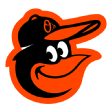 30. Baltimore Orioles
30. Baltimore Orioles
Projected record: 64-98 (Change from final 2018: +16)
Neutral RS: 622 | Neutral RA: 791
Unit ranks: Hitters (30) | Fielders (30) | Starters (28) | Relievers (21)
If only Jimmy Breslin were around to write a book about these guys. Just remember, O's fans: Seven years after the '62 Mets were amazing, they were miraculous. Of course, they beat your guys in the Series, so perhaps I shouldn't have used that example for encouragement. In any event, this will be a long season in Baltimore.
-

OP, thanks........
i really like these write-up. very concise by informative. i tried to get into some of the annual books and they are just too wordy.
seems like alot of the win totals at bottom and top involve alot of mean reversion. i guess that makes sense but it's sort of anti-climactic and something i could do myself.
1. Boston Red SoxProjected record: 98-64 (Change from final 2018: -11)
2. New York YankeesProjected record: 94-68 (Change from final 2018: -5)
3. Houston Astros
4. Los Angeles Dodgers
5. Chicago Cubs
6. Cleveland Indians
7. Milwaukee Brewers
8. New York Mets
9. Los Angeles Angels
10. Atlanta Braves
11. Washington Nationals
12. St. Louis Cardinals
13. Philadelphia Phillies
14. Colorado Rockies
15. Tampa Bay Rays
16. Oakland Athletics
17. Cincinnati Reds
18. Pittsburgh Pirates
19. Minnesota Twins
20. Seattle Mariners
21. San Diego Padres
22. Arizona Diamondbacks
23. Texas Rangers
24. San Francisco Giants
25. Chicago White Sox
26. Toronto Blue Jays
27. Kansas City Royals
28. Detroit Tigers
29. Miami Marlins
30. Baltimore Orioles


 Reply With Quote
Reply With Quote